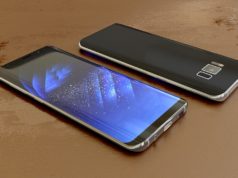The 24-pin USB-C connector, sometimes mentioned to as USB Type-C, is future to be quicker, more dense, and more functional than USB-A. Because USB-C is reversible, you can plug it in either way without disturbing about harmful it.
High-Definition Multimedia(HDMI) Boundary is a standard 19-pin connection used to link devices to projectors, TVs, and other displays. HDMI supports many resolves, including 4K and 8K, and can convey both audio and video signals.
This article presents a compelling comparison between USB-C and HDMI, exploring their special features, invaluable capabilities, and key differences. , it will help you see where the pendulum swings, whether it’s universal USB-C or high-definition HDMI. Join us on an exciting roller coaster ride through the fast-paced world of digital connectors.
Simplified Connectivity with Cable Time
USB-C Cable Time is a leading worker of cable and Internet facilities in the United States. Choose from a change of plans, including high-speed internet, cable TV, phone service, and more. Cable Time is known for reliable service and customer support. simple connectivity Cable Time is committed to giving customers easy access to the Internet and their favorite entertainment. They offer a variety of simplified connectivity options, including:
Self-Installation Kits:
Cable Time offers self-installation kits that make it easy to set up Internet and TV services at home.
Professional Installation:
Cable Time also offers professional installation services for customers who prefer a technician to set up their service.
Differences Between USB-C And HDMI
Although both USB-C to HDMI cables are used harbors for sending audio and video signals, they vary in a few important ways.
Kind of Plug
USB-C: Also mentioned to as USB Type-C, USB-C is a 24-pin connector that is quicker, more receptive, and more solid than USB-A. You don’t need to worry about the front or back because it is alterable.
HDMI, a High-Definition Multimedia Line, is a 19-pin connection that is used to link tools to projectors, TVs, and other displays. It is permanent.
Main Elements
USB-C: Data, power, and video signals can all be conveyed using this adaptable port. used to link computers, chargers, external displays, laptops, cellphones, tablets, and other gadgets.
HDMI: Although it can also send audio signals, its main application is the broadcast of video signals. no future for the transfer of data.
Supported Resolutions
USB-C: Based on the specific DisplayPort Alt Mode application, USB-C can support a diverse series of resolutions, including 4K and 8K.
HDMI: HDMI can provision up to 8K and 4K resolutions, among others. Resolves up to 10K are maintained by the most recent HDMI 2.1 standard.
Purpose and Function of USB-C
Here are a few of USB-C’s unique features:
Data Transfer:
USB-C is capable of 20 Gbit/s (USB 4.0) and 10 Gbit/s (USB 3.2 Gen 2) of data transfer. Perfect for sending big files, like pictures and videos.
Power:
USB-C is capable of if up to 100 watts of power, which is enough to charge a tablet, laptop, smartphone, and other devices. For many devices, this removes the need for separate power supplies.
Video Transmission:
Since USB-C is capable of sending video signals, it can be used to link laptops, tablets, smartphones, and other gadgets to projectors, TVs, and monitors. USB-C is proficient in transmitting audio signals, allowing you to connect audio devices such as speakers and headphones.
Purpose and Function of HDMI
High-definition video transmission:
HDMI is talented at sending video signals at up to 8K resolution, which is 16 times higher than 1080p and four times higher than 4K determination.
Audio Transmission:
HDMI is capable of sending audio signals that are both trodden and uncompressed. Due to their lower bandwidth supplies, beaten audio formats like Dolby Digital and DTS are more
used. Uncompressed audio formats like PCM offer the best audio skills.
Ethernet And CEC
More data that HDMI is capable of moving includes Ethernet and CEC (Consumer Electronics Control) signals. Through the HDMI cable, devices can connect to a network via Ethernet, and , through CEC, devices can control one another.
How Does HDMI Power Delivery Operate?
Power and data are transmitted over the same cable when using PD over HDMI. There are two more wires in the cable that are intended especially for Parkinson’s disease. An HDMI cable that is compatible with the device and supports Power Delivery (PD) can supply power to the device.
How Does Power Delivery over USB-C Operate?
A USB-C device and a PD-enabled charger will negotiate the required power level when they are connected. The charger receives power requirements from the device and uses that information to supply the necessary amount of power. We call this process “power negotiation.”
Conclusion
HDMI is still likeminded and suitable for linking devices to TVs, monitors, and projectors. Although USB-C Power Delivery is a quite new technology, it is probable to become more dominant in the future. Although PD over HDMI is a new technology, it is expected to become more general in the future. Power Delivery (PD) over HDMI is a feature that permits an HDMI cable to deliver power to connected devices.







